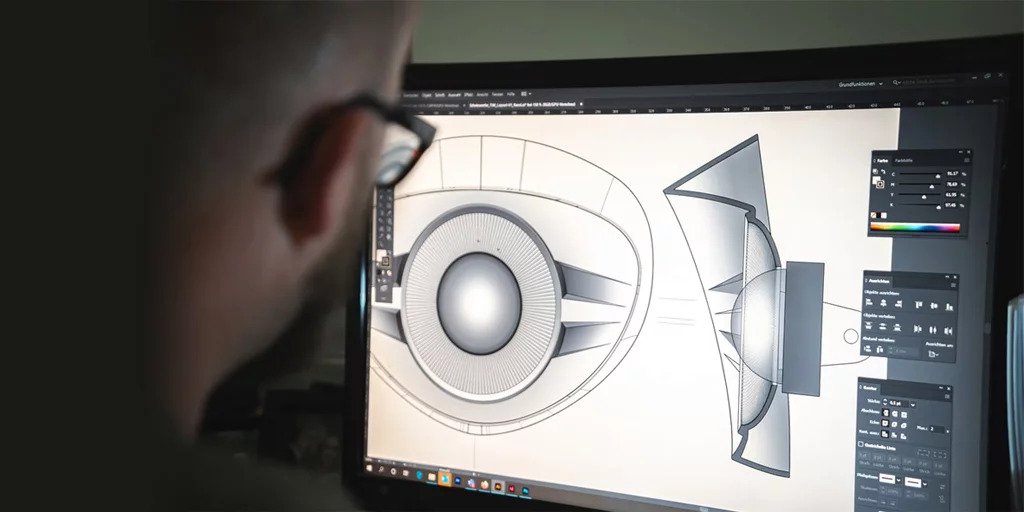
CAD technicians use their knowledge and talents in engineering, information technology, and mathematics to design structures, machines, items, and components.
A CAD technician, also known as a draughtsperson, uses CAD software to make technical drawings and blueprints for goods and components in the engineering, construction, and manufacturing industries.
You’ll work with architects and design engineers to understand the requirements of their original ideas and convert them into exact and complete technical drawings in 2D and 3D models. These drawings are used throughout the project, from cost and feasibility calculations to creating blueprints for fabrication and installation instructions.
Suppose you like computer-aided design (CAD). In that case, you may also enjoy computer-aided industrial design (CAID), computer-aided engineering (CAE), computer-aided styling (CAS), and computer-aided manufacturing design (CAMD) (CAM).
Responsibilities
Throughout your apprenticeship, you may help:
- use 2D or 3D software to produce sketches, schemes, models and detailed drawings
- check that drawings meet quality and technical standards
- find and fix inaccuracies or mistakes
- communicate with engineers, designers and project staff
- read and interpret engineers’ drawings
- do mathematical calculations to work out angles, weights and costs
- keep accurate records of different versions of your design work.
Salary
Salaries depend on location, employer and level of experience.
- Starting salaries for apprentice CAD technicians are in the region of £17,000 to £20,000.
- With experience, this can rise to between £20,000 and £35,000.
- Senior or chartered CAD technicians can earn £35,000 to £50,000.
Working hours
Working hours are typically 9am to 5pm, Monday to Friday, but longer hours and overtime may be required to meet project deadlines.
Opportunities for freelance work are available.
Working environment
You could work in an office or on a construction site.
Qualifications
You could complete an intermediate or advanced apprenticeship in engineering, manufacturing or construction.
The exact apprenticeship qualification you take will depend on your job role but there are several that include computer-aided design work.
Entry requirements
You’ll usually need:
- some GCSEs, usually including English and maths, or equivalent, for an intermediate apprenticeship
- 5 GCSEs at grades 9 to 4 (A* to C), or equivalent, including English and maths, for an advanced apprenticeship.
Skills
On an CAD technician apprenticeship, you’ll learn:
- design skills and knowledge
- maths skills
- to be thorough and pay attention to detail
- excellent verbal communication skills
- knowledge of engineering science and technology
- thinking and reasoning skills
- the ability to work well with others
- the ability to use your initiative
- to be able to use a computer and the main software packages confidently.
Employers
CAD technicians are often found in the manufacturing, engineering, and construction industries. Still, they may also be found in various other firms that design or manufacture components or products.
Large civil engineering, construction, or manufacturing companies may have in-house design or drawing offices, or you might work for a specialised drafting or design business that provides CAD drawing services to other industries.
Professional development
Experienced CAD technicians and draughtspeople may apply to the Engineering Council to become an EngTech. Obtaining EngTech certification demonstrates that you possess the essential technical skills, talents, and commitment to professional standards.
To be eligible for EngTech certification, you must first enrol in an engineering institution. The Engineering Council has a detailed list.
Following that, you may request that your qualifications, training, and experience be reviewed in line with The UK Standard for Professional Engineering Competence (UK-SPEC).
Professional certification may lead to higher earning potential and additional job opportunities.
You may be eligible to move to Incorporated Engineer after earning EngTech level. Additionally, apprentices with a relevant degree may be eligible for professional certification as Chartered Engineers.
CAD professionals need to keep up to date on industry-relevant design tools. In addition, there are generally many opportunities to learn how to use new and advanced CAD software as part of ongoing professional development (CPD) with firms.
Career prospects
Beginning activities for freshly trained CAD technicians may include updating existing designs or moving archive drawings from paper to computer. As you gain expertise, your career may grow, enabling you to be more involved in the design process and work on larger projects.
CAD technicians may move to jobs such as heading a team of technicians, overseeing work in the design office, and coordinating overall project management.
Apprentices with CAD technician expertise may proceed to roles such as design engineer and civil engineer.
